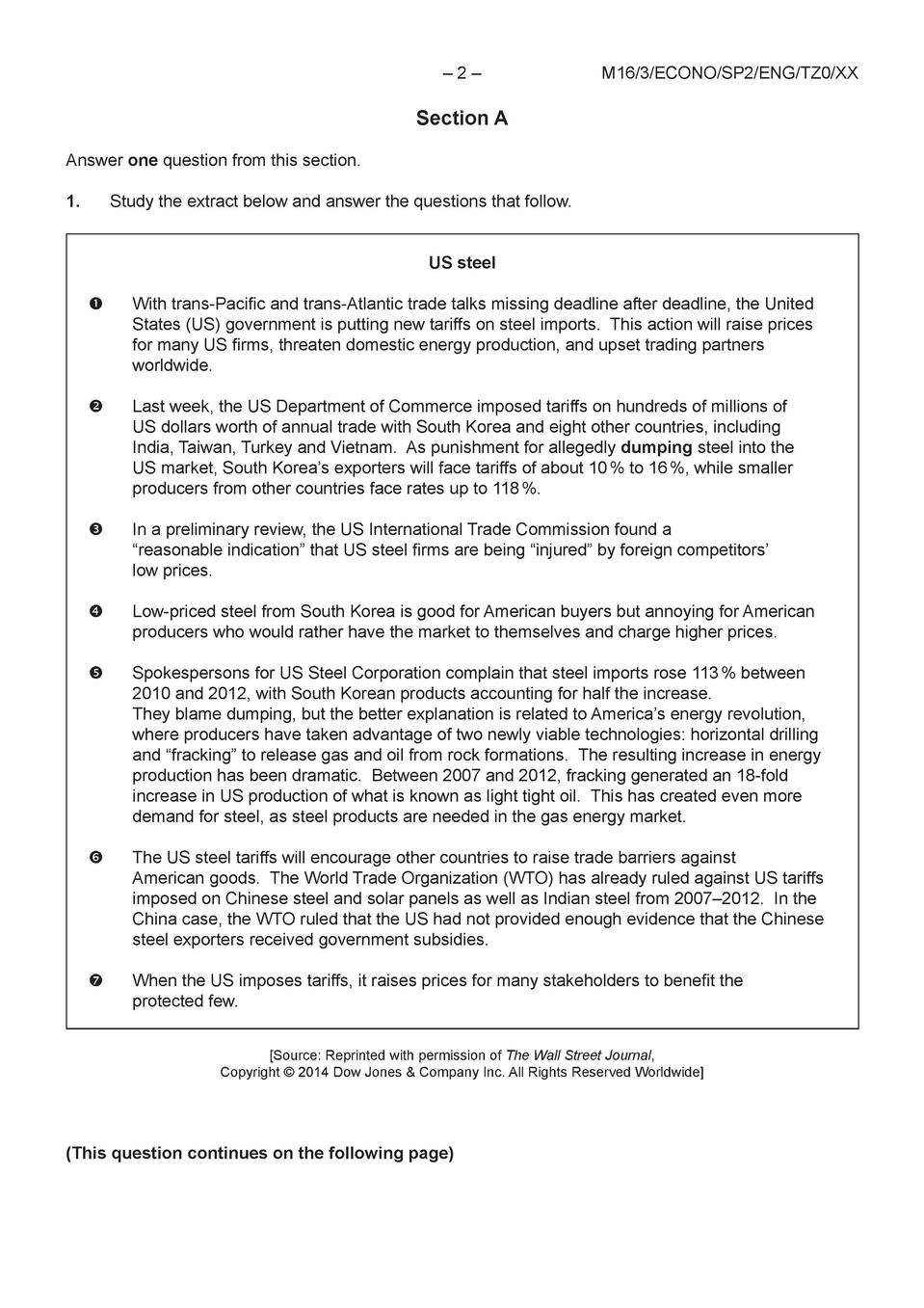Ib Economics Paper 1 Sample Answers
- Ib Economics Paper 1 Sample Answers 2019
- Ib Economics Paper 1 Sample Answers Class
- Ib Economics Paper 1 Sample Answers Pdf
- Mattlidens IB Economics. Simon Wallen IB Economics. IB economics - Old syllabus. Economic Definitions. Internal Assessment. Lecture Theory Slides.
- Ib Economics Paper 1 Sample Answers Pdf. Taking the IB Economics exam will be nerve-wracking no matter what. However, taking practice tests with past papers beforehand will be a huge advantage since you'll know the test format and be.
Answers the Question Benefit of Doubt Clear Knowledge Shown Cross - Incorrect Point Effective Evaluation Good Analysis Good Definition Good Diagram Good Example Good Explanation Highlight tool Incorrect Labelling Irrelevant Inappropriate Use Lacks Depth Lacks Logical Structure L0 Level 0 L1 Level 1 L2 Level 2 L3 Level 3 L4 Level 4. Answers the Question Benefit of Doubt Clear Knowledge Shown Cross - Incorrect Point Effective Evaluation Good Analysis Good Definition Good Diagram Good Example Good Explanation Highlight tool Incorrect Labelling Irrelevant Inappropriate Use Lacks Depth Lacks Logical Structure L0 Level 0 L1 Level 1 L2 Level 2 L3 Level 3 L4 Level 4. Please look at the sample questions and answers below to give you further insight into how to define, analyse and evaluate effectively. New Material Posted in January 2015. Answering Paper 1. Economics 11 Extended Response Test – Micro 1. Market Failure Paper One-Style Test. Tariff Quota DRQ 2014. May 2011 SP2 Q4 Answer. BOP and Exchange Rate.
4. a. Analyse the methods by which Gross Domestic Product (GDP) may bemeasured.- Define analyze.
- Break down in order to bring out the essential elements or structure.
- Define GDP.
- GDP is the measure of all incomes within the borders of the country, regardless of who owns the assets.
- Explain components of GDP.
- GDP = I + C + G + (net exports)
- Investment, Consumption, Government expenditure, and Exports minus Imports.
- 3 methods for analyzing GDP:
- Expenditure method.
- Explain how it's calculated.
- Income method.
- Explain how it's calculated.
- Output method.
- Explain how it's calculated.
- Add diagram of circular flow of income.
- Explain diagram.
- Include example if appropriate.
Ib Economics Paper 1 Sample Answers 2019


- Define discuss:
- Offer a considered and balanced review that includes a range of arguments, factors, or hypotheses.
- Define GDP:
- GDP is the measure of all incomes within the borders of the country, regardless of who owns the assets.
- GDP = I + C + G + (net exports)
- Investment, Consumption, Government expenditure, and Exports minus Imports.
- Claim:
- Populations vary among countries, so while China for example may have a higher GDP than Canada, its GDP per capita is a lot smaller, because China's population is a lot bigger than Canada's. Therefore, GDP per capita would be a more useful way of comparing economic activity.
- Counterclaim:
- However, a large portion of the economic activity in the country may actually be from foreign direct investment (FDI), which would include assets not owned by the country, but instead, by other countries. FDI is long-term investment by multinational corporations (MNCs) in countries overseas. In some developing countries, a large portion of their GDP comes from FDI. Consequently, while it may seem that the developing country has a certain GDP, countries that own the FDI in that country are actually making a large contribution to the country's GDP, which would make it seem like the country itself is doing better than it really is. So perhaps GNI per capita would be an even better measure of economic activity, because GNI (Gross National Income) per capita only measures the total income of the country's owned assets. GNI doesn't include FDI, and does include its own FDI in other countries, as well as the incomes of its citizens that are not within the country's borders.
- Conclusion:
- While GDP may be a useful means of measuring economic activity between similar countries in terms of population and levels of FDI, since most countries differ from one another in many respects, it may be more useful to instead compare economic activity through GNI per capita figures.
